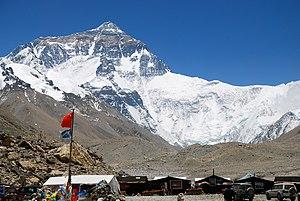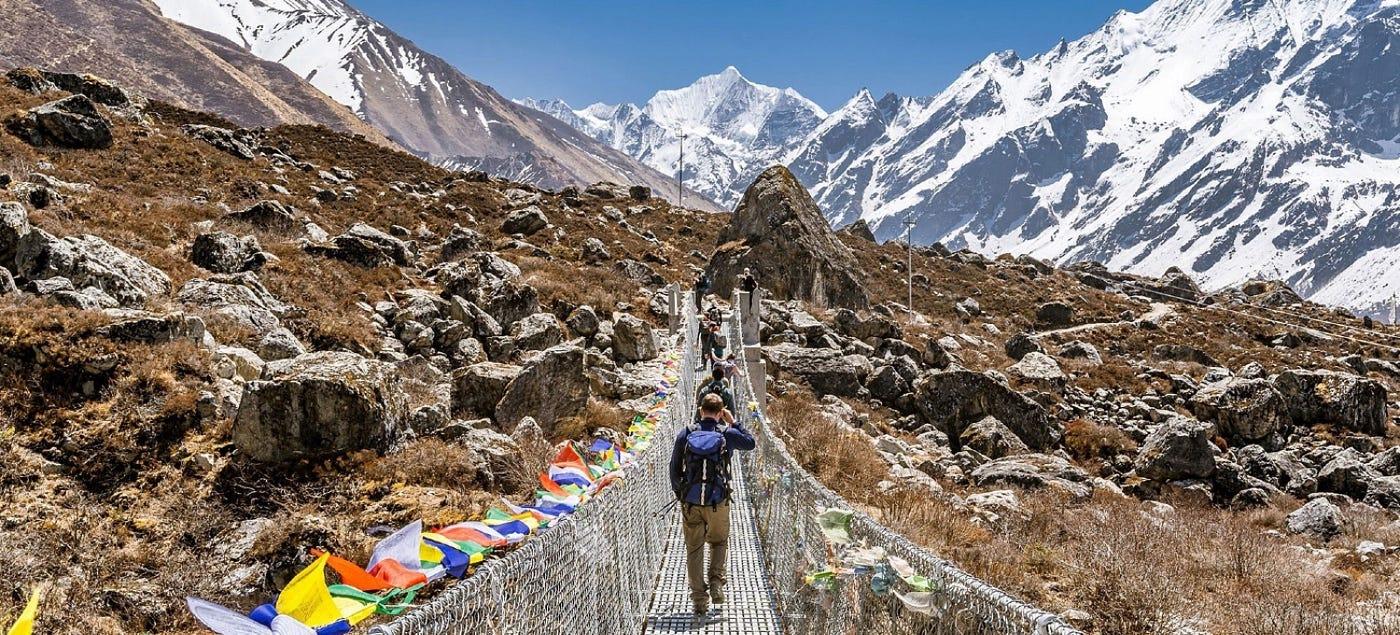Arun Valley Trek
- Author : Surbi
- Date : 27th September, 2024
- Time : 1 Min Read
- Euphoria
- Blog Detail
The Arun Valley trek offers an incredible opportunity to explore village life with typical folk dance and songs. Commencing with a flight to Tumlingtar to the East of Everest, the first week is spent trekking through virgin territory into the Solukhumbu region before a push-up on the main Everest trail to Kala Patthar.
The trek from Tumlingtar at barely 390m to Makalu Base Camp at 4,800m is long and arduous as a vast range in temperatures is confronted, from steamy in the lowlands to snowstorms at high altitudes. It is compulsory to hike toward the north along the Arun River to Sedua and Num, then cross the Barun La 4110m into the upper Barun Khola valley for a close look at Mount Makalu.
En Route
Orchids and other flowers along a faint jungle trail, swirling prayer flags at Shipton La, and walking through this picturesque Sherpa village are the attractions of the Arun Valley region. Walking north up the Arun River to Sedua and Num, then crossing Barun La (4110m) into the upper Barun Khola valley for a close look at Makalu (8463m). Likewise, the trekking route offers dramatic views of the landscape and the beautiful scenery of mighty Himalayan peaks.
One can enjoy the views of Mount Everest, Mt. Makalu, Mt.Baruntse, Mt.Lhotse, Mt.Nuptse, Mt. Amadablam, Mt.Thamserku, etc on their walking journey. Mind-blowing music and the age-old culture of the Nepalese hilly region are the highlights for travelers.
Best Time
For this trek, we consider autumn (September – November) and spring (March- May) as the best seasons for trekking in this region.
So Join the Nepal Mountain Trekkers team to be part of this breathtaking scenic grandeur trek. For an experience, you will never forget.
Special Note:
If this itinerary doesn’t suit your requirement or if you want to customize it, please feel free to contact us. This trek could be customized as per your required time frame and budget limits.
Overview
Day 1
Arrive at Kathmandu (1,347m/4,417ft):
Day 2
Kathmandu Sightseeing and Trek Preparation:
Day 3
Flight to Tumlingtar and trek to Kartike (523m/1,715 ft):
Day 4
Kartike to Gothey (1,128m/3,700 ft):
Day 5
Gothey to Salpa Phedi (1,680m/5,511 ft):
Day 6
Phedi to Gurase Bhanjyang (2,500m/8,202 ft):
Day 7
Gurase to Sanam (2,850m/9,350 ft):
Day 8
Sanam to Bung (1,900m/6,233 ft):
Day 9
Bung to Gai kharka (2,300m/7,545 ft):
Day 10
Gaikharka to Panggom (2,850m/9,350 ft):
Day 11
Panggom to Painya (2,830m/9,284 ft):
Day 12
Painya to Lukla (2,840m/9,317 ft):
Day 13
Flight from Lukla to Kathmandu:
Day 14
Departure Day:
Detail Itinerary
Day 1 : Arrive at Kathmandu (1,347m/4,417ft)::
As soon as you arrive at the capital city, Kathmandu, you will be met by a representative from Nepal Mountain Trekkers at International Airport terminals and he will take you to your respective hotel (Hotel Green Horizon or similar standard). After checking into the hotel, you can enjoy your free time relaxing in the cozy room or stroll around the tourist hub Thamel area until the end of the day.
Day 2 : Kathmandu Sightseeing and Trek Preparation::
After having our early meal, we start our day with a visit to the Nepal Mountain Trekkers office at Thamel. After being introduced to our team including tour guide, trekking leader, and director of operations, we head for necessary trekking preparations, getting needed equipment with the initiation of Kathmandu sightseeing around world heritage sites. Kathmandu Durbar Square, Swayambhunath Stupa, Pashupatinath Temple, and Boudhanath Stupa are UNESCO world heritage sites that we explore till sunset. Overnight stay at a hotel in Kathmandu. B included.
Day 3 : Flight to Tumlingtar and trek to Kartike (523m/1,715 ft)::
To begin with the adventure in eastern Nepal, we shall begin the day with an early morning drive to Domestic Airport and take on a flight to the hill town of Tumlingtar, perched on a broad plateau to the east of Arun River, along the chain of Himalayas. There we shall enjoy our breakfast and introduce ourselves to our local porters. From this village, which provides a view of Makalu and Chamlang Peaks on clear weather, we shall set off on a drive to the trailhead of Kumal Gaon walking through the forested trail. From there, we head towards the eastern bank of the Arun River and cross the bridge which directs us to the Bheteni village. Walking further via Chewabesi, passing through bushes, and heading to the southern direction along the bank of Arun River, we reach Kartike. Stay Overnight at Kartike.
Day 4 : Kartike to Gothey (1,128m/3,700 ft)::
Today after your early meal, we will head towards the small settlements of Baluwa Besi thru the grasslands and crossing the bridge over the Arun River. Following the trail, we will be ascending towards Sal Forest and some small settlements until we reach the Marduwa village inhabited by Rai people. Along the way, we can notice the beautiful landscapes and terraced fields cultivated with rice and other crops. Moving ahead of here and exploring some more of such beautiful settlements, farms, and walking along the Irkhuwa river, we will reach our destination for today, Gothey. Stay Overnight at Gothey.
Day 5 : Gothey to Salpa Phedi (1,680m/5,511 ft)::
We will be ascending via several small settlements inhabited by Rai and Sherpa people, crossing suspension bridges over Irhuwa Khola, cross streams, and some lush bushes today. With the adorable and picture-perfect sceneries along the trail, we will reach Salpa Phedi where we will be staying overnight this day.
Day 6 : Phedi to Gurase Bhanjyang (2,500m/8,202 ft)::
This day, we will be ascending for more almost 900m high elevation from Phedi. After breakfast, we will start our trekking through the lush bushes and arduous trail. It is a rather tough but worthwhile trekking journey today. The beautiful oak, birch, and Rhododendron forests and the mind-boggling sceneries of landscapes and mountain ranges will make this journey a fulfilling one. Stay Overnight at Gurase Bhanjyang.
Day 7 : Gurase to Sanam (2,850m/9,350 ft)::
Today, we will be hiking up to the highest elevation of our journey i.e., Salpa La Pas (3,360m) which is a steady climb from Gurase. From the pass, the eye-dazzling sceneries of Makalu ranges and Chamlang can be seen. After the steep ascent up to the pass, we shall descend towards Dhaka through beguiling Rhododendron forest. Further on, we will trek up to Sanam village where we will be staying overnight.
Day 8 : Sanam to Bung (1,900m/6,233 ft)::
Our journey will be full of ascends and descends the entire day through the forested trail with Rhododendron, Brown Oaks, Chir Pines, and other flora and fauna. We will be crossing a steel suspension bridge over the Hinku River and descend towards the village of Bung where we stay overnight. Bung is a Rai village where we will be discovering about the cultivation of Rice, Millet, and Soybeans in the terraced field in their own traditional farming techniques.
Day 9 : Bung to Gai kharka (2,300m/7,545 ft)::
Another day full of ascends and descends. We commence the journey descending steeply through the cliff of a hill and then pass across the settlements of Najindingma. Today we can spot some Chortens and Monasteries along the way as well as we will be passing some Yak grazing meadows and bushes. Stay Overnight at Gai Kharka.
Day 10 : Gaikharka to Panggom (2,850m/9,350 ft)::
Like the previous days, this is going to be somehow similar with the ascends and descends across gorges and old moraines, Rhododendron, and Juniper forest alongside the Hinku River, and in addition, we can have the magnificent view of Mera Peak with some glimpses of the Upper Khumbu region. Also, a steep ascent to Panggom La Pass (3,174m) offers a close-up view of Mera Peak, Kusum Kanguru, Kangtega, and other neighboring peaks. From the pass, we will descend toward Panggom village inhabited by Sherpa people where we will stay overnight.
Day 11 : Panggom to Painya (2,830m/9,284 ft)::
From Panggom, we trek uphill through the forest of oak, birch, bamboo, and rhododendron, and six ancient Mani walls, crossing Kari La Pass (3,145m) and continuing the hike until we arrive at a small wooden bridge (above Paiya Khola) and along the slippery and narrow trail, we will reach the settlement of Painya. We will stay overnight at Painya.
Day 12 : Painya to Lukla (2,840m/9,317 ft)::
From Paiya, it is about 5-6 hours of the walk at a leisurely pace to reach Lukla with gradual ascend through lush bushes. Initiating the journey climbing down the steep hill toward Surke and then ascending towards Paiya La Pass aka Chutok La Pass (2,945m / 9,662 ft) passing through several small settlements and alpine forests, we will reach Paiya Lukla where we will be staying overnight.
Day 13 : Flight from Lukla to Kathmandu::
After having your early meal, you will be transferred to the airport to catch a short domestic flight from Tenzing-Hilary Airport, Lukla to Kathmandu Domestic Airport. Upon arrival at Kathmandu, stroll down across the streets of culturally affluent Kathmandu valley for shopping souvenirs, enjoy complimentary after trekking spa from Nepal Mountain Trekkers, and farewell dinner at a cultural restaurant at end of the day.
Day 14 : Departure Day::
Today will be your final day in Nepal, and after you get ready for your international flight, we drop you at Tribhuvan International Airport for your scheduled international flight towards your onward destination.
Leave A Comment:
Author
Related Blogs
1 min read
by Ghanendra Thapa
Shiva Dhara
Shiva Dhara Trek, one of the most interesting, but most difficult to do, among the trekking routes in the Makalu Arun Valley. Now one of the leading p...
1 min read
by Sushila Thapa
Everest Base camp
Everest Base Camp Trek The Everest Base Camp trek combines the convenience of well-maintained paths with the raw beauty of the Himalayas. The Everes...
1 min read
by Prasiddha Kc
Langtang Valley
Langtang Valley Trek is a pleasant delightful and ideal journey in the Langtang region. It is famous for providing stunning vistas of the mountains, n...



